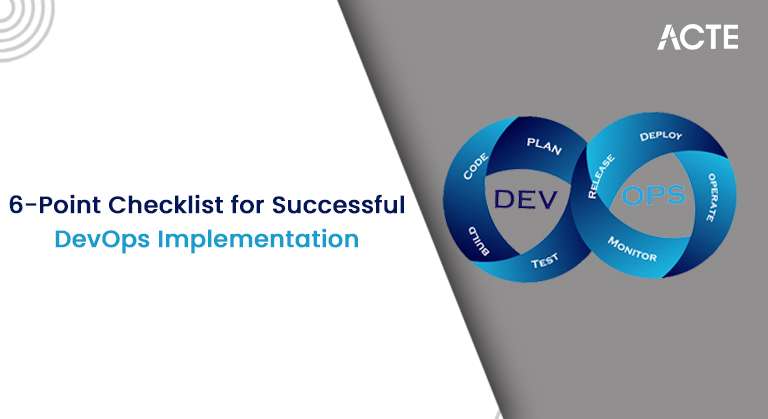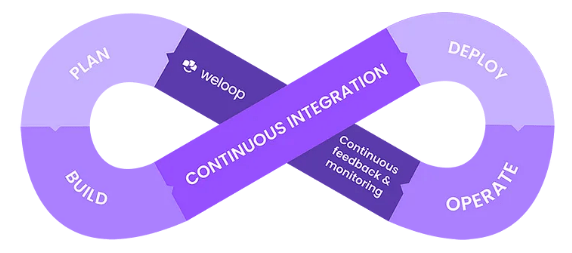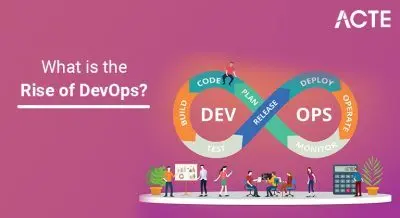
- Establishing Clear DevOps Goals
- Implementing CI/CD Effectively
- Using Infrastructure as Code (IaC)
- Automating Testing and Security
- Ensuring Continuous Monitoring and Feedback
- Fostering a Collaborative Culture
- Optimizing Cloud Resource Management
- Choosing the Right DevOps Tools
- Aligning DevOps with Business Objectives
- Measuring Performance and ROI
- Future Roadmap for DevOps Success
- Conclusion
Establishing Clear DevOps Goals
Establishing clear goals is fundamental to the successful implementation of DevOps Implementation within any organization. Without defined objectives, teams can face confusion around priorities, leading to inefficiencies and misalignment. One of the primary goals of DevOps is to improve software delivery speed, allowing development teams to release new features and updates more quickly and efficiently. Alongside speed, enhancing software quality is also crucial. Through automated testing and continuous feedback, DevOps enables early bug detection and faster iteration, resulting in more reliable software, a key principle emphasized in DevOps Training. Another essential goal is increasing collaboration by breaking down silos between development and operations teams, fostering better communication, shared responsibilities, and overall productivity. DevOps also focuses on achieving consistent infrastructure and deployment using practices like Infrastructure as Code (IaC), which helps minimize manual errors and ensure scalability. Additionally, improving security through DevSecOps practices integrates security checks throughout the development lifecycle, reducing vulnerabilities. Clearly defined DevOps goals align team efforts with business strategy, providing measurable outcomes and continuous process improvements.
Do You Want to Earn Your DevOps Certification? Check Out DevOps Online Course Offered By ACTE Right Now!
Implementing CI/CD Effectively
- Automating Build and Integration: Setting up a CI pipeline ensures that every time code is committed, it is automatically built, integrated, and tested. This enables early identification of issues and accelerates the development cycle.
- Automated Testing: Ensuring that automated tests (unit tests, integration tests, etc.) are part of the CI pipeline guarantees that new code does not break the existing codebase.
- Continuous Deployment: Automating the delivery process with a CD pipeline ensures that every successful code change is deployed to production or staging environments, increasing the frequency of releases and improving time-to-market.
- Monitoring and Feedback Loops: Integrating monitoring tools into the CI/CD pipeline ensures that teams can quickly identify failures and get real-time feedback about the deployed software.
- Infrastructure as Code (IaC): By using IaC tools like Terraform or Ansible, teams can automate infrastructure provisioning, configuration, and management, ensuring consistent environments across development, testing, and production.
- Version Control for Configuration: Storing and managing configuration files in version control systems (e.g., Git) ensures that infrastructure and application configurations are consistent, traceable, and can be rolled back when necessary, reducing risks in the deployment process a practice central to tools compared in Terraform vs Ansible.
- Defining Infrastructure with Code: Tools like Terraform, CloudFormation, or Ansible allow infrastructure configurations to be written as code, ensuring consistency across environments.
- Automation of Provisioning: IaC enables the automated provisioning of infrastructure, ensuring that the setup of servers, databases, and networks is consistent and repeatable.
- Version Control for Infrastructure: Storing infrastructure configurations in version control systems (like Git) allows for version tracking, collaboration, and rollback in case of errors.
- Scaling Infrastructure: IaC supports dynamic scaling, meaning infrastructure can be provisioned or de-provisioned automatically based on demand, which is ideal for cloud environments.
- Application Monitoring: Using tools like Prometheus, Datadog, or New Relic to track application performance metrics, error rates, response times, and uptime.
- Infrastructure Monitoring: Ensuring that servers, databases, and other infrastructure components are monitored for performance bottlenecks, hardware failures, and resource utilization is crucial, especially when evaluating Docker Alternatives and Their Standout Features.
- User Experience Monitoring: Tools like Sentry and LogRocket allow teams to track user-facing issues and track application logs to pinpoint performance degradation or bugs.
- Real-Time Feedback: By integrating monitoring tools with CI/CD pipelines, teams can receive real-time feedback on code changes, deployment, and system health, leading to faster issue resolution.
- Anomaly Detection: Using machine learning-powered monitoring tools, such as Splunk or AWS CloudWatch, to automatically detect unusual patterns in data, alerting teams to potential issues before they impact users.
- Log Management: Centralizing log data from various sources using tools like ELK Stack (Elasticsearch, Logstash, Kibana) or Fluentd helps in efficiently analyzing and troubleshooting application and infrastructure issues.
- Breaking Down Silos: DevOps aims to break down barriers between traditionally separated teams (development, QA, and operations) to promote a shared responsibility for software delivery.
- Open Communication: Promoting open communication between teams ensures that everyone is aligned on goals, timelines, and potential challenges.
- Cross-Functional Teams: Encouraging teams to work together on shared tasks helps develop mutual respect and promotes faster decision-making, which is a core principle of What is DevOps.
- Continuous Improvement: A collaborative culture promotes a mindset of ongoing learning, feedback, and adaptation.
- Shared Tools and Practices: Using common tools and workflows across teams helps streamline collaboration, reduce friction, and ensure consistency in development, testing, and deployment processes.
- Fostering Innovation: Encouraging collaboration enables teams to brainstorm and innovate together, leading to creative solutions, better problem-solving, and more efficient approaches to meeting business objectives.
- Understand Business Needs: Identify key business goals like faster time-to-market, improved software quality, or better customer satisfaction.
- Set Metrics: Define measurable metrics (e.g., deployment frequency, lead time, MTTR) to assess the impact of DevOps on business goals.
- Ensure Cross-Department Collaboration: Ensure that DevOps teams understand business objectives and can translate them into actionable development goals.
- Customer-Centric Approach: DevOps practices should focus on delivering value to the end customer, improving user experience, and maintaining application stability, which can be influenced by understanding the Difference between Docker and Virtual Machine.
- Continuous Feedback Loop: Establish a feedback loop that collects insights from customers, stakeholders, and monitoring tools to improve development practices and address issues quickly.
- Adaptability and Flexibility: DevOps should be adaptable to changing business priorities and market demands, allowing teams to pivot and adjust processes or technologies to meet evolving business needs.
- Deployment Frequency: Track how often code is deployed to production, as frequent deployments are a sign of an efficient pipeline.
- Lead Time: Measure the time it takes for a code change to go from development to production. Shorter lead times indicate a more efficient process.
- Mean Time to Recovery (MTTR): Track how quickly the team can respond to and resolve issues in production. Lower MTTR indicates better incident management, which can be achieved with the help of the Best CI/CD Tools Used by Programmers.
- Customer Satisfaction: Improved software quality and faster releases often lead to better customer satisfaction, a critical metric for success.
- Change Failure Rate: Measure the percentage of changes that result in failures, as a lower failure rate indicates more reliable and stable deployments.
- Automation Coverage: Track the percentage of processes automated within the pipeline. Higher automation coverage indicates more streamlined workflows and reduced human error.

Using Infrastructure as Code (IaC)
Infrastructure as Code (IaC) is a key practice in DevOps that allows teams to manage and provision computing infrastructure through code rather than manual processes.
Automating Testing and Security
Automating both testing and security is crucial for maintaining high-quality and secure software throughout the development process. Automated testing includes several layers, such as unit testing, which ensures individual components work as expected; integration testing, which verifies the interaction between system components; and end-to-end testing, ensuring the entire system functions as intended from the user’s perspective. Performance testing evaluates how the system performs under different conditions. On the security side, DevSecOps integrates security directly into the DevOps pipeline. Static Application Security Testing (SAST) automatically scans source code for vulnerabilities, while Dynamic Application Security Testing (DAST) assesses the running application for potential security weaknesses, all of which are integral to understanding What is AWS DevOps. Additionally, compliance as code automates the process of ensuring infrastructure configurations and applications meet regulatory standards. Automating both testing and security helps detect issues early in the development cycle, improving software quality, security, and compliance while reducing the risk of vulnerabilities and errors in production.
Want To Earn Your DevOps Certification, Gain Insights From Leading DevOps Experts And Advance Your Career With ACTE’s DevOps Online Course Today!
Ensuring Continuous Monitoring and Feedback
Continuous monitoring and feedback loops are essential to ensure that issues are quickly identified and resolved. DevOps teams need to monitor applications, infrastructure, and user experiences to improve performance and stability.

Fostering a Collaborative Culture
One of the most important aspects of DevOps is fostering a culture of collaboration between development, operations, quality assurance, and other teams. Without collaboration, DevOps initiatives will struggle to succeed.
Optimizing Cloud Resource Management
Effective cloud resource management is crucial for ensuring that cloud environments are cost-efficient, scalable, and responsive to business needs. Dynamic scaling tools, such as AWS Auto Scaling or Google Cloud Autoscaler, automatically adjust resources based on demand, helping to prevent both over-provisioning and under-provisioning. Cost management tools like AWS Cost Explorer or Azure Cost Management allow organizations to monitor cloud usage and optimize spending, ensuring that resources are utilized without incurring unnecessary costs, a topic often discussed in DevOps Training. Automating resource provisioning and de-provisioning ensures that businesses only pay for what they need, by automatically scaling resources like VMs, storage, and databases based on workload requirements. Cloud monitoring tools such as CloudWatch or Stackdriver provide continuous oversight of cloud resources, helping to identify inefficiencies and optimize resource allocation. By implementing these strategies, businesses can ensure their cloud resources are used efficiently, reducing costs while maintaining the scalability and responsiveness necessary to meet application needs at any given time.
Considering Pursuing a DevOps Master’s Degree? Enroll For DevOps Masters Course Today!
Choosing the Right DevOps Tools
Selecting the right set of tools is crucial for the success of DevOps, as the right tools enable task automation, improve collaboration, and streamline workflows. Key factors to consider when choosing DevOps tools include tool integration, ensuring that tools like Jenkins for CI/CD work seamlessly with testing tools and deployment pipelines. Cloud and containerization compatibility is also important, as tools should integrate smoothly with cloud platforms (AWS, Azure, GCP) and containerization technologies like Docker and Kubernetes. Scalability is another consideration; tools should be able to grow with your business as the environment becomes more complex. Support and community play a crucial role, so it’s important to choose tools with strong community backing, comprehensive documentation, and active contributor ecosystems. Popular DevOps tools include Jenkins for CI/CD, Terraform for Infrastructure as Code (IaC), Docker for containerization, Kubernetes for orchestration, and Prometheus for monitoring. By selecting the right tools, DevOps teams can achieve automation, continuous integration, and improved collaboration while leveraging the Top Features of Docker for efficient container management.
Aligning DevOps with Business Objectives
Measuring Performance and ROI
Measuring DevOps performance and ROI allows organizations to understand the effectiveness of their DevOps practices and justify the investment in tools and processes.
Preparing for a DevOps Job Interview? Check Out Our Blog on DevOps Interview Questions & Answer
Future Roadmap for DevOps Success
As DevOps continues to evolve, organizations must remain agile and adapt to emerging trends to stay competitive. AI and Machine Learning will play a key role in DevOps, helping with predictive analytics, anomaly detection, and automating complex processes, making workflows more efficient. Additionally, serverless architectures and edge computing are gaining traction, requiring DevOps processes to evolve to manage these decentralized and scalable environments effectively. Enhanced security will remain a central focus, with a stronger emphasis on automated security testing, continuous monitoring, and compliance to address growing cyber threats. The future of DevOps also points toward unified platforms that integrate CI/CD, Infrastructure as Code (IaC), monitoring, and collaboration tools into a single ecosystem, simplifying workflows and accelerating adoption, a concept that is often covered in DevOps Training. By embracing these trends, organizations can optimize their DevOps practices, improve efficiency, and ensure long-term success in an increasingly complex and dynamic landscape.
Conclusion
This guide outlines a comprehensive approach to successful DevOps implementation, emphasizing the importance of clear goals, effective strategies, and the right tools. By aligning DevOps practices with business objectives, organizations can streamline workflows and accelerate software delivery. Key strategies include fostering collaboration between cross-functional teams, automating testing and deployment, and continuously monitoring performance to ensure efficiency. Additionally, optimizing resource management through dynamic scaling and cost management ensures cost-effectiveness and scalability. Overcoming common DevOps challenges, such as integrating various tools and maintaining security, is also crucial. By promoting continuous improvement and adaptability, organizations can stay agile and responsive to market demands. Ultimately, the guide emphasizes that with the right approach, DevOps can lead to faster, more efficient software delivery, improved quality, and better alignment with business goals.




